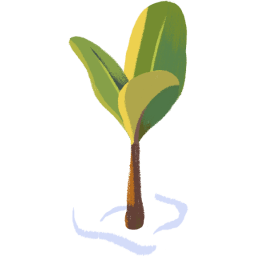Kelsey Williamson fell in love with the beautiful, dramatic, and craggy mountains of Colorado where she grew up — but for as long as she can remember, she’s been drawn to the ocean. After graduating university, Williamson made her lifelong dream of moving to Hawaii come true.
For the last seven years, Williamson has spent most of her days hiking, freediving, and honing her craft: underwater, landscape, and travel photography. She describes herself as “a true adventurer at heart,” which allows her to create unique visuals exploring the beauty of islands around the world.
Most recently, Williamson traveled to and lived for a couple of years on Mo'orea, an island in French Polynesia where she has been seeing the world anew through the eyes of humpback whales as she documents them through her camera lens, as well as photographing coral reef restoration for a nonprofit organization. Her goal is to help advance marine conservation.
Williamson is also part of Only One’s network of ocean ambassadors helping to support vital stories, solutions, and campaigns around the world.
This interview was condensed and edited for clarity.
Why is fine-art photography important for raising awareness of ocean issues?
There are so many people in the world who don’t live near the ocean and will never get to experience the beauty it has to offer. Through fine-art photography, people get to see just how incredible the ocean is and in turn learn how important it is to our global ecosystem.
Fine-art photography draws in people who love the ocean already as well as people who don’t know anything about it. It creates awareness automatically and then gives the opportunity to everyone to learn what they can do to help. Being an underwater photographer myself, I hope that my photography will inspire others to learn more about ocean issues and start to care more about the ocean.
What is your favorite marine species? How is it being impacted by plastic pollution?
One of my favorite marine species to photograph is the humpback whale. They are so majestic and truly gentle giants. It’s incredible to watch them in the ocean and they are also so important for our ecosystem. Many people don’t know, but humpback whales help provide at least half the oxygen we breathe, combat climate change, and sustain fish stocks. They do this by providing nutrients to phytoplankton.
It’s crazy to think that it used to be legal to kill these mammals that are so vital to our marine ecosystem. While it’s illegal to kill them now, they are still battling another crisis caused by humans: plastic pollution. Plastic pollutes so much of the ocean, and every marine species is affected by it in some way. Most marine life ends up ingesting plastic floating through the ocean. Plastic can also kill marine species as they get strangled in it. Even larger marine mammals, like whales, can get entangled because so much ocean plastic pollution is made up of large plastic-based fishing nets and ropes. Being so passionate about humpback whales drives me even more to try and stop plastic pollution.
What actions can people take to help solve the plastics crisis?
I’m always thinking about ways I can become more sustainable, and I really try hard to stay away from one-time plastic use. It can be daunting to make changes, as when you look around your house, everything is in plastic, from what your food is packaged in to all of your toiletries. While it’s hard to cut out plastic use completely, I have found that if you make small changes over time, you slowly start becoming more plastic-free and more conscious. I am not perfect, but being conscious is the first step to making lasting changes.
I use my own mug or cup, bags, straws, and utensils when I am out. I also buy bamboo toothbrushes and support brands that are plastic-free. You can now buy shampoo and conditioner bars, toothpaste that comes in a plastic-free container, reusable bags to store food that are plastic-free, and even reusable food storage wrap made from beeswax.
You can reach out to your favorite brands asking if they will do a better job at packaging their products in a plastic-free way. Brands do listen to consumers, and the more that people reach out, the more likely that companies will take those requests into account.
When I am out at the beach or in the water, I try hard to pick up plastic that I see left behind. But of course, this task is too big for individuals as there is a great garbage patch and a never-ending amount of trash on our coastlines and in our ocean. That is why donating to conservation groups like Only One is another great way to get involved in trying to eliminate plastic, as these groups are already making huge efforts to stop plastic pollution at the source.
























